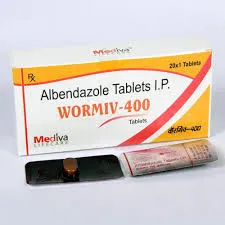- Afrikaans
- Albanian
- Amharic
- Arabic
- Armenian
- Azerbaijani
- Basque
- Belarusian
- Bengali
- Bosnian
- Bulgarian
- Catalan
- Cebuano
- Corsican
- Croatian
- Czech
- Danish
- Dutch
- English
- Esperanto
- Estonian
- Finnish
- French
- Frisian
- Galician
- Georgian
- German
- Greek
- Gujarati
- Haitian Creole
- hausa
- hawaiian
- Hebrew
- Hindi
- Miao
- Hungarian
- Icelandic
- igbo
- Indonesian
- irish
- Italian
- Japanese
- Javanese
- Kannada
- kazakh
- Khmer
- Rwandese
- Korean
- Kurdish
- Kyrgyz
- Lao
- Latin
- Latvian
- Lithuanian
- Luxembourgish
- Macedonian
- Malgashi
- Malay
- Malayalam
- Maltese
- Maori
- Marathi
- Mongolian
- Myanmar
- Nepali
- Norwegian
- Norwegian
- Occitan
- Pashto
- Persian
- Polish
- Portuguese
- Punjabi
- Romanian
- Russian
- Samoan
- Scottish Gaelic
- Serbian
- Sesotho
- Shona
- Sindhi
- Sinhala
- Slovak
- Slovenian
- Somali
- Spanish
- Sundanese
- Swahili
- Swedish
- Tagalog
- Tajik
- Tamil
- Tatar
- Telugu
- Thai
- Turkish
- Turkmen
- Ukrainian
- Urdu
- Uighur
- Uzbek
- Vietnamese
- Welsh
- Bantu
- Yiddish
- Yoruba
- Zulu
Dùbh . 28, 2024 15:40 Back to list
Uses and Benefits of Gentamicin Sulfate Cream in Skin Treatments
The Uses of Gentamicin Sulfate Cream
Gentamicin sulfate cream is a widely used topical antibiotic formulation that plays a crucial role in the treatment of various skin infections caused by susceptible bacteria. This medication belongs to the aminoglycoside class of antibiotics, which are effective against a range of gram-negative and some gram-positive bacteria. The primary use of gentamicin sulfate cream is to promote healing in infected wounds, ulcers, and skin lesions. This article explores its uses, mechanism of action, and some considerations for its use.
Mechanism of Action
Gentamicin works by inhibiting bacterial protein synthesis. It binds to the 30S ribosomal subunit of the bacteria, which interferes with the translation process, leading to the production of abnormal proteins. This disruption halts bacterial growth and ultimately leads to cell death. Its broad-spectrum activity makes it particularly effective against a variety of pathogenic bacteria, including *Escherichia coli*, *Staphylococcus aureus*, and *Pseudomonas aeruginosa*. Due to its potency, gentamicin sulfate is often used in clinical settings where acute infections are present.
Medical Uses
1. Dermal Infections Gentamicin sulfate cream is primarily indicated for the treatment of bacterial skin infections, such as impetigo, infected eczema, and infected wounds. It is particularly useful in cases where topical therapy is preferred over systemic antibiotics. The cream can be applied directly to the infected area, allowing for targeted treatment with minimal systemic absorption.
2. Post-surgical Wound Care After surgical procedures, patients are at risk for wound infections. Using gentamicin cream on surgical wounds can help prevent infections caused by bacteria introduced during surgery. Its application can assist in keeping the wound clean and free from bacterial contamination.
3. Ulcers and Burns Gentamicin sulfate cream is also effective in treating ulcerated skin and second-degree burns. In these situations, the prevention of infection is critical, as open skin areas are susceptible to bacterial invasion. The antibiotic properties of gentamicin make it a valuable option for maintaining wound integrity and promoting healing.
4. Ocular Uses In some cases, gentamicin has been formulated for ocular use to treat conjunctivitis and keratitis caused by bacterial infections. It is available in the form of eye drops or ointments and serves as an effective treatment for localized infections around the eyes.
kegunaan krim gentamicin sulfate

Application and Dosage
Gentamicin sulfate cream should be applied to the affected area 1 to 3 times daily, as directed by a healthcare professional. It’s crucial to clean the area before application to ensure optimal results. A thin layer of the cream should be gently massaged into the skin. Bandages may be used if recommended by a physician, but the application should allow the cream to remain in contact with the skin for maximum efficacy.
Potential Side Effects
While gentamicin sulfate cream is generally well tolerated, some individuals may experience local side effects such as itching, redness, or irritation at the application site. Prolonged use or excessive application can lead to secondary infections or an imbalance of normal skin flora. In rare cases, systemic absorption could lead to nephrotoxicity or ototoxicity, particularly if the cream is used over large areas of the body or under occlusive dressings.
Precautions
Before using gentamicin sulfate cream, it is essential to inform the healthcare provider of any known allergies or sensitivities. Patients should also disclose any other medications being used, as drug interactions may occur. Pregnant or breastfeeding women should consult a physician before using this medication, as it is essential to consider the potential risks and benefits.
Conclusion
Gentamicin sulfate cream is an effective topical antibiotic that plays a significant role in the management of bacterial skin infections. Its unique mechanism of action allows it to combat a variety of pathogens, making it a preferred choice in many clinical situations. However, like all medications, it should be used judiciously while considering potential side effects and contraindications. Proper application and adherence to prescribed dosages will enhance treatment efficacy and promote faster healing, ensuring that patients can return to their daily lives with minimal disruption.
-
Guide to Oxytetracycline Injection
NewsMar.27,2025
-
Guide to Colistin Sulphate
NewsMar.27,2025
-
Gentamicin Sulfate: Uses, Price, And Key Information
NewsMar.27,2025
-
Enrofloxacin Injection: Uses, Price, And Supplier Information
NewsMar.27,2025
-
Dexamethasone Sodium Phosphate Injection: Uses, Price, And Key Information
NewsMar.27,2025
-
Albendazole Tablet: Uses, Dosage, Cost, And Key Information
NewsMar.27,2025













